Head up to Aquinnah on any Saturday, rain or shine, warm or frigid. Turn left onto Church street and be on the lookout for a green field. Get out of the car and begin walking along a small path through the trees. At first the woods are still and silent. Then the sounds of children singing drift in from the distance. Keep walking. The voices grow louder, there is a guitar and the smell of smoke. A few more steps and the path opens up to reveal a teepee and a large campfire. The children are singing “poison i-vy, poison i-vy...” When the song ends, they scatter to tend to their own, smaller campfires.
This is Sassafras Earth Education, a program begun by Saskia Vanderhoop that centers around one core principle, connecting with nature.
Ms. Vanderhoop moved to the Island from Amsterdam in 1998 and started Sassafras with her husband, David Vanderhoop, in 2003 as a one-week summer camp. Over the years it has blossomed into a year-round endeavor with camps every week during the summer and programs throughout the year for toddlers, older kids, girls, homeschoolers and, recently, a program for parents too.
But Ms. Vanderhoop’s interests in nature connection began years before she came to the Vineyard. “It really started at a moment in my life when I realized that I wasn’t giving my son the life I wanted for him,” she recalled. “I remember I was living in Amsterdam and he was one year old and we’d take him to the park every day ... and I can recall this one moment I was sitting in the park and this sadness came over me. Here I saw my little boy and I had to tell him not to pick up sticks and not to touch things because it was trampled down by people. I said to myself what am I doing here?”
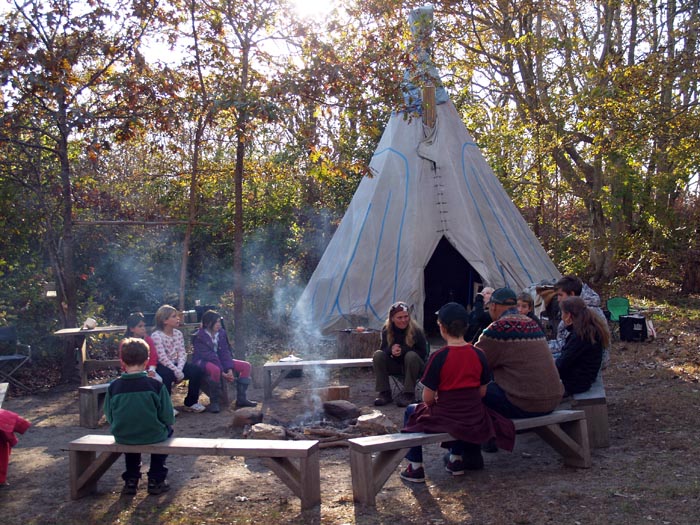
She took some courses in primitive skills and survival living, inspired by the work of Tom Brown Jr. and the Tracker School.
“Primitive cultures had a lot of common elements that were found cross-culturally all over the world and would help societies living close to nature survive and become resilient communities,” she said, referring to cultural elements such as elders and rites of passage. “The idea isn’t to just create nature connection, [but] how do you make it so it replicates itself. How do you bring these themes back into our current society?”
A large way she does this is through children’s programs like Girls in the Woods and the weekly Saturday Coyotes and Squirrels. Here children are encouraged to explore their own interests and strengths in the context of spending the day outdoors. Come winter, the children will even build snow shelters and, if they care to, bunk down in them overnight.
”What I really try to offer children is a place where they can follow their own passions. If a child comes here two or three times I can already see ‘oh that’s going to be a fire person, or that’s going to be a birder, or that’s going to be a person who loves to gather plants.’ And sometimes they switch and sometimes they evolve, they have more than one thing that they really like to do, but it seems to almost come with a certain natural archetype that fits the child or that the child somehow fits in.”
The monthly Girls in the Woods program develops these skills specifically for girls ages 9 to 14 who, Ms. Vanderhoop feels, are faced with many societal challenges and pressures as they evolve into young women. The program offers girls a place to create a connection with nature, with each other, and with themselves.
On Saturday, she shared a story of giving a young girl the task of helping the other children find witch hazel trees. “When I asked her to do that she just led the whole activity. I didn’t have to say a word, and she’s just blossoming ... full of self-confidence because she knows exactly what she’s talking about,” she said. “It’s just about one tree, you know, but it gives her a really good sense of self.”
Ms. Vanderhoop says nature is the real teacher of the program and views herself as just the facilitator. But after watching her for even a short while, it’s clear she teaches in conjunction with nature.
“When I do storytelling, I ask them to be quiet, and it’s not just for me, it’s also in respect for the story and where it came from,” she said. “I want to foster that they respect me, and eventually that branches out to respect for the natural world, respect for each other, respect for themselves, ultimately.”
Sassafras is run almost entirely by the Vanderhoops, with some volunteers and extra staff in the summer. For the program to succeed, though, and for the lessons to have longevity, Ms. Vanderhoop feels support is essential. “This concept really needs to be a community effort, so I’m really reaching out to people,” she said. “This thing is not going work if it just rests on my shoulders, or on mine and David’s shoulders, because eventually one of us is going to die, so it really needs to be a community thing and that’s my goal, to have more and more people be involved in it.”
As last Saturday’s program came to a close, and the campfires began to smoulder, Ms. Vanderhoop asked the Coyotes and Squirrels if they had been visiting their “sit spots.” A sit spot is a quiet place in nature the children visit for twenty minutes a day to observe and connect with nature. It is one of the program’s “core routines” and Ms. Vanderhoop feels it is one of the best teaching tools. Sitting around the fire, she handed out beads to each student, one for each time they visited their sit spot and one more for attending the program. She also offered an extra “appreciation bead,” for the children to give to someone else in the program as a token of acknowledgement.
After receiving a bead, the young woman playing the guitar gave it back to the group as a thank-you. The bead was gently placed on the campfire.
“We’ll take it as smoke, it’s for everyone,” Ms. Vanderhoop said.
To find out more about Sassafras Earth Education, including Girls in the Woods, Saturday Coyotes and Squirrels, Outdoor Home-Schoolers and for preschoolers, Nature’s Nest, visit sassafrasmvy.org.


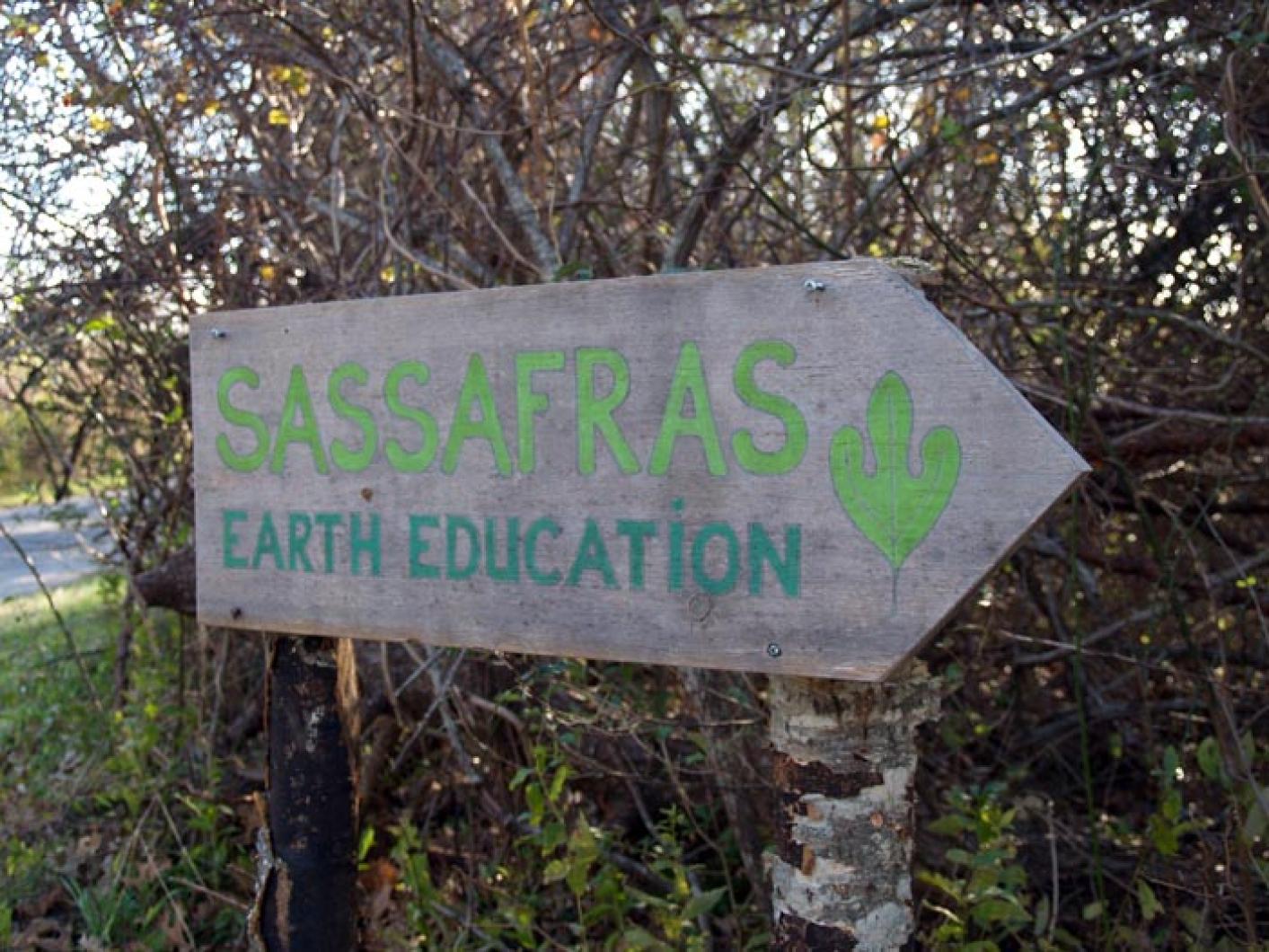
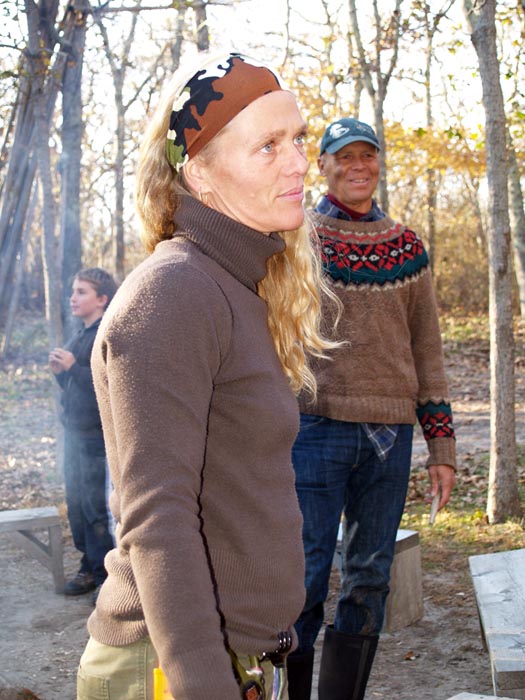
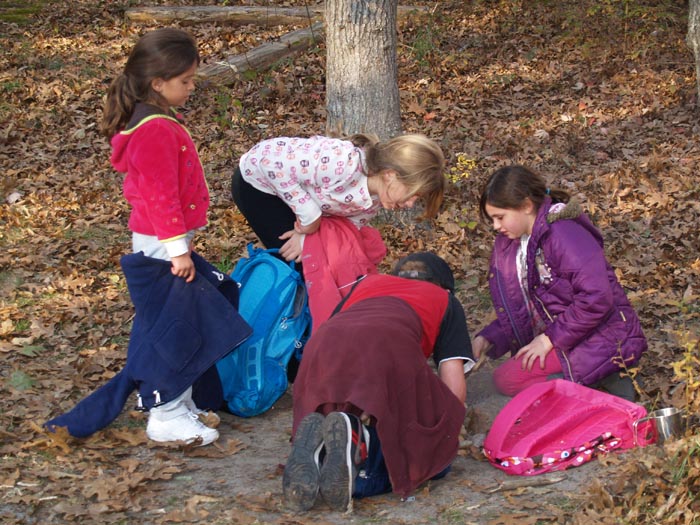

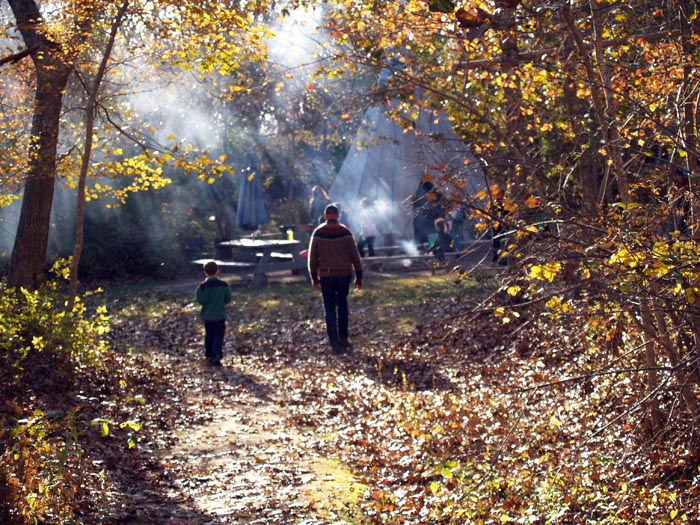


Comments
Comment policy »